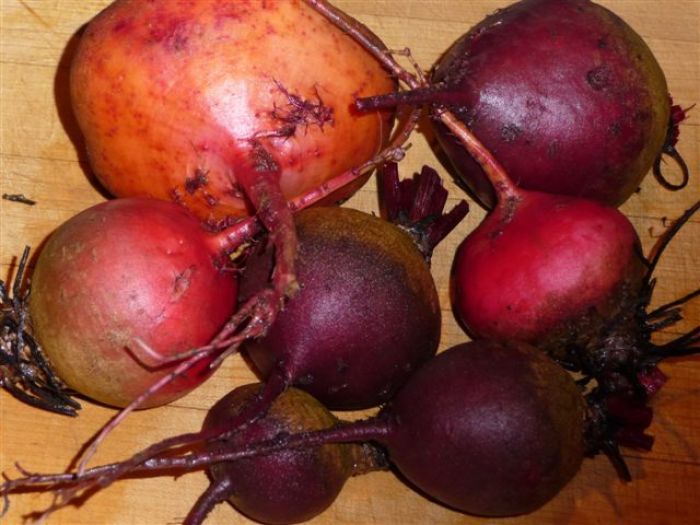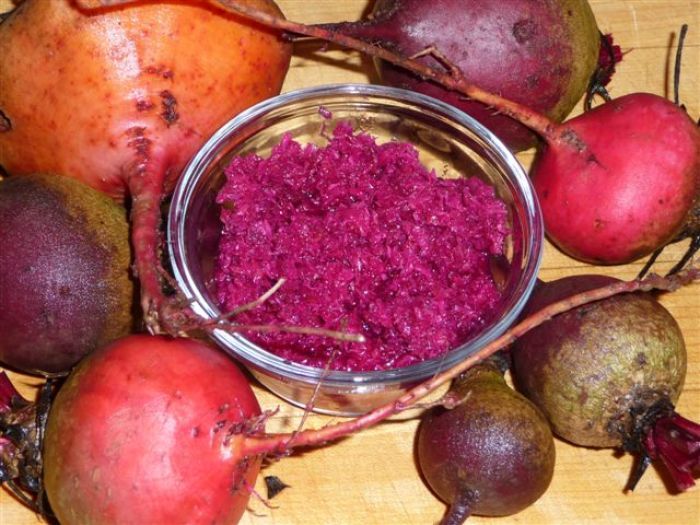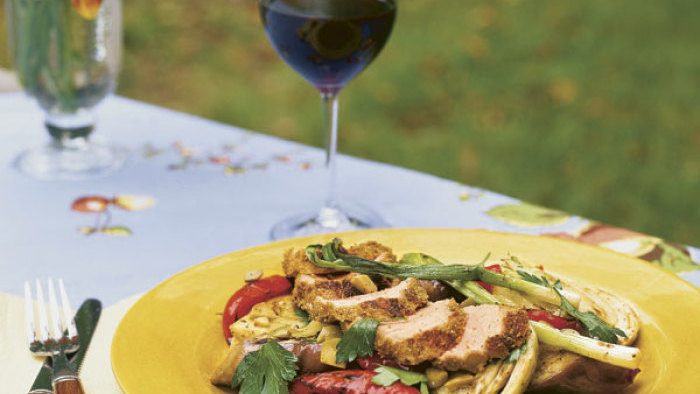
What foods do you fix for your loved ones on Valentines day?
Besides the obvious choice of chocolate, what else do you go for? Of course there are the known and popular aphrodisiacs such as oysters, champagne, asparagus, artichokes, avocados, figs, etc.
For the fun of it, I like to use foods that are red, or even pink in color. So immediately, beets (Beta vulgaris) come to mind. Not only are they naturally very red-purple in pigmentation, from betacyanin, which is a cancer-fighting agent, they are a root vegetable that is readily available this time of year.
Some other red vegetables are radishes, which could be used as a garnish in your salad. Tomatoes and chile peppers, which aren’t in season, can be used canned or dried; sometimes I make heart-shaped raviolis and serve them with a traditional red marinara sauce. Red cabbage, which in my mind’s eye is really more blue-purple rather than red, can also be shredded and added to salad.
Most red fruits also aren’t in season this time of year, although red-skinned apples and pears are still available, and even the occasional bag of cranberries. There are many summer fruits which contain those red pigments: watermelon, plums, grapes, pomegranates, cherries, raspberries, and strawberries. If we haven’t preserved, dried or frozen them, we can still buy them pretty much year round, however they are shipped from afar. Dried berries can be reconstituted in fruit juice or combined with apples and pears to make pies or crumbles.
For Valentine’s day, I tend to go for the traditional—a chocolate dessert. My daughter Cady loves red velvet cake which seems to be very trendy these days. You can use beet juice to color it rather than red food coloring.
A lot of people don’t like beets… or think they don’t like them. I grew up on pickled beets and have always liked them. I have converted alleged beet-haters to beet converts with some of the following recipe ideas.
Of course, I love them pickled and in borscht; simply roasted in the oven is decidedly the best, either eaten hot as a side dish, or cold on a salad. Roasted, boiled or steamed beets are delightful when sliced and served hot or cold, with any of the following sauces: salsa verde, garlic aioli, skordalia, or sourcream and horseradish. I like dark, purple-red beets, golden beets, and the striped Italian Chioggia is dazzling and delicious. Two favorite beet salads are roasted beets with arugula and feta garnished with toasted walnuts and a balsamic vinaigrette; and sliced, roasted beets served on spinach or mixed greens garnished with orange zest and spring onions with an orange vinaigrette. Baked beets, (actually any root vegetable) layered with sour cream and/or crème fraiche and lots of freshly grated horseradish sprinkled with dry breadcrumbs and baked until bubbling are superb. A beet puree made from steamed or roasted beets, combined with a large knob of butter or a few tablespoons of olive oil, a few cloves of fresh garlic, a handful of tart sorrel leaves, or dill or watercress, seasoned with salt and pepper to taste is at once, sweet, earthy and savory—I can eat this by the spoonful.
These are just a few of my favorite ways to consume this earthy root vegetable, which is high in natural sugars; they are high in folate, calcium, manganese and potassium. Beets also contain many earth minerals and vitamins: vitamin C, copper, iron, phosphorous and tryptophan. Beets are a tonic and cleansing food and have antioxidant, anti-inflammatory and rejuvenating characteristics. Do not discard those beet greens! I prepare them as I would any other wilted green and often combine them with chard, spinach, kale, nettles and/or dandelion greens; they make a wonderful filling for ravioli or cannelloni, or spanakopita.
Click here for the recipe Dilled Beet and Buttermilk Soup.




















Comments
Log in or create an account to post a comment.
Sign up Log in